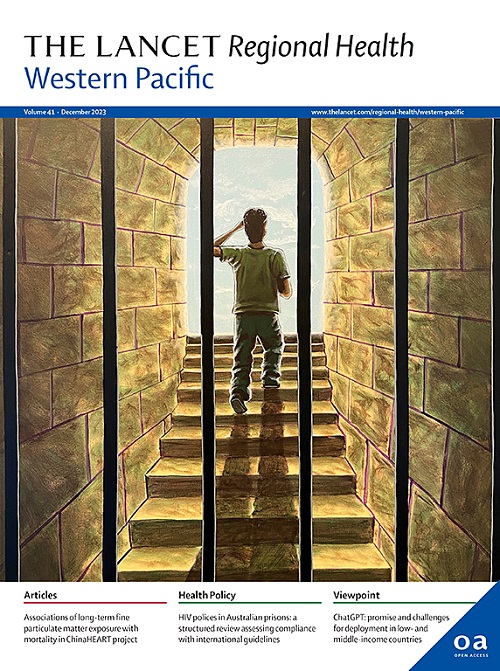Remnant cholesterol and lung cancer mortality in Chinese older adults: a large prospective cohort study
IF 7.6
1区 医学
Q1 HEALTH CARE SCIENCES & SERVICES
引用次数: 0
Abstract
Background
The health significance of remnant cholesterol (RC) has been increasingly recognized. However, data are scarce with respect to their associations with lung cancer mortality in China, where lung cancer is a major public health issue among the elderly due to its increasing incidence and high mortality. Therefore, this study aimed to examine the association of RC with lung cancer mortality in Chinese individuals aged 65 years and over.
Methods
A total of 1,841,003 participants over 65 years were recruited in Zunyi, Luzhou and Shenzhen, China from January 1, 2017, to December 31, 2021. During baseline visits, questionnaire interviews were conducted to collect information on socioeconomic status (sex, age, education) and lifestyles (current smoking, exercising frequency, and alcohol drinking status). Vital status for each participant was obtained through linkage with China national death registration system up to December 2021. After excluding 575,456 participants with incomplete information, 1,265,547 participants remained for analysis. Baseline blood pressure, fasting blood glucose and blood lipids levels were measured, and participants were stratified into quartiles for RC, with quartile 1 representing the lowest levels (<0.46 mmol/L) and quartile 4 the highest (≥1.20 mmol/L). We considered lung cancer mortality (the International Classification of Diseases–10th Revision: C33–C34) as the underlying cause of death as the primary outcome. The Cox proportionate hazard models were used to estimate hazard ratios (HRs) with 95% confidence intervals (CIs) between RC categories and lung cancer mortality. Stratified analyses were performed to further explore association in various subgroups.
Findings
Among the 1,265,547 eligible participants included, the mean age was 71.43 ± 5.95 years, and 673,746 (53.2%) were female. During a mean follow-up of 2.91 years, 85,374 participants died, including 6,330 from lung cancer. In the full cohort, higher levels of RC were associated with decreased risks of lung cancer mortality. Compared with participants with RC in quartile 1, crude HRs (95% CI) were 0.89 (0.83-0.99) and 0.82 (0.76-0.88) for those with RC in quartile 3 and quartile 4 respectively. After adjustment for baseline sex, age, education, current smoking, drinking status, systolic blood pressure, exercise frequency, fasting blood glucose, the observed HRs (95% CI) was 0.90 (0.84-0.96) for those with RC in quartile 4. Subgroup analyses showed consistent results for both men and women.
Interpretation
Higher remnant cholesterol was associated with a lower mortality risk of lung cancer. Although the associations were robust in our analysis, it is still unclear whether this is because cholesterol is one of the protective factors against the occurrence and mortality of lung cancer, or due to a greater competing risk of death among patients with higher RC. Future studies focusing on the incidence of lung cancers and better addressing causal questions are therefore needed. Strengths of this study include the prospective design, large sample size and validated endpoints. Limitations include the fact that this cohort recruited people in three cities in China and hence findings might not be generalizable to other settings. Moreover, the follow-up period from RC measurement to death was relatively short.
求助全文
约1分钟内获得全文
求助全文
来源期刊

The Lancet Regional Health: Western Pacific
Medicine-Pediatrics, Perinatology and Child Health
CiteScore
8.80
自引率
2.80%
发文量
305
审稿时长
11 weeks
期刊介绍:
The Lancet Regional Health – Western Pacific, a gold open access journal, is an integral part of The Lancet's global initiative advocating for healthcare quality and access worldwide. It aims to advance clinical practice and health policy in the Western Pacific region, contributing to enhanced health outcomes. The journal publishes high-quality original research shedding light on clinical practice and health policy in the region. It also includes reviews, commentaries, and opinion pieces covering diverse regional health topics, such as infectious diseases, non-communicable diseases, child and adolescent health, maternal and reproductive health, aging health, mental health, the health workforce and systems, and health policy.
 求助内容:
求助内容: 应助结果提醒方式:
应助结果提醒方式:


